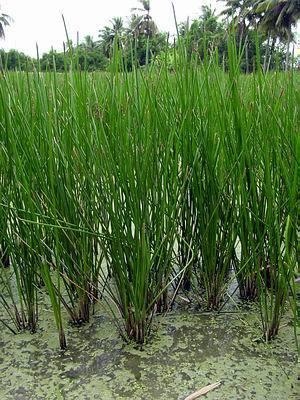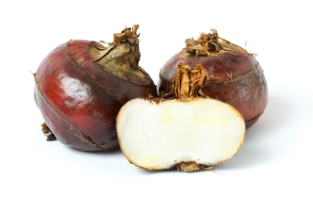 Eleocharis
dulcis, E.
Plantaginea 马
蹄 Mǎ tí Water
chestnut
Eleocharis
dulcis, E.
Plantaginea 马
蹄 Mǎ tí Water
chestnut
FUNCTIONS
1. Clear up Heat.[1] Relieves fever.[2] Purges Liver Fire.[3]
2. Transform sputum, eliminate Qi Stagnation.[1] Benefits indigestion.[2]
3. Promotes urination.[2]
4. Resolves bruises and clots.[3]
INDICATIONS
1. Diabetes in a warm disease.[1,2] Jaundice.[1,2] Hot urinary discharge.[1,2] Red eyes.[1,2,3] Sore throat.[1,2] Tumour.[1]
2. Hypertension.[2]
3. Pain in abdomen and haunches, malnutrition due to worms, anemia, hernia and gassy stomach, inflamed swellings, amenorrhea.[3]
CONTRAINDICATIONS: Bad for Deficient conditions and Cold constitution, Blood Empty.[1]
PREPARATIONS: Boil or crush for external application.[1] Decoction 4-9 g.[1]

- Relieve hypertension- Boil 5 water chestnuts in water with 1 fresh mandarin orange peel. Drink as tea, 3 times a day.[2]
- Cure sore throat, hemorrhoids, and mouth canker- Peel 100 g water chestnuts and chew them slowlin in the morning and evening, or drink water chestnut juice.[2]
- Cure diarrhea with discharge of whitish or reddish substances- Prepare 500 g water chestnuts; wash in water and dry thoroughly; put them in half a bottle of rice wine; seal it and set aside for a few days. Slowly chew 2 water chestnuts each time and wash down with the rice wine in the bottle, twice a day.[2]
- Relieve hemorrhoid bleeding- Warm a glass of water chestnut juice and mix with 2 teaspoons rice wine and drink it.[2]